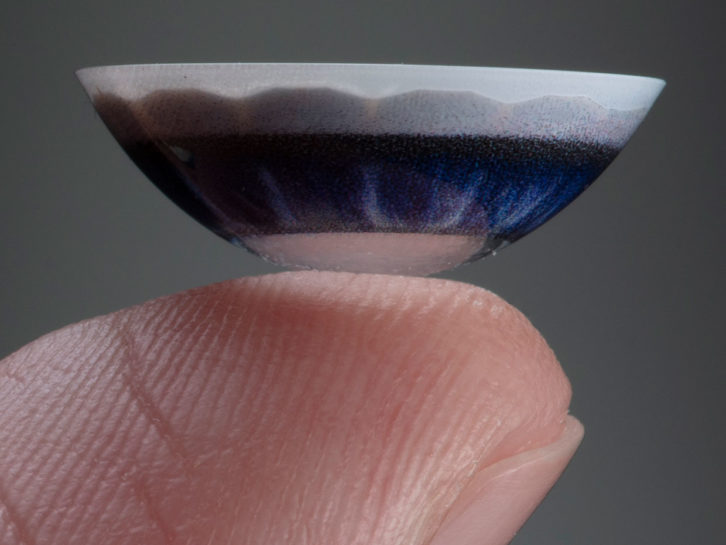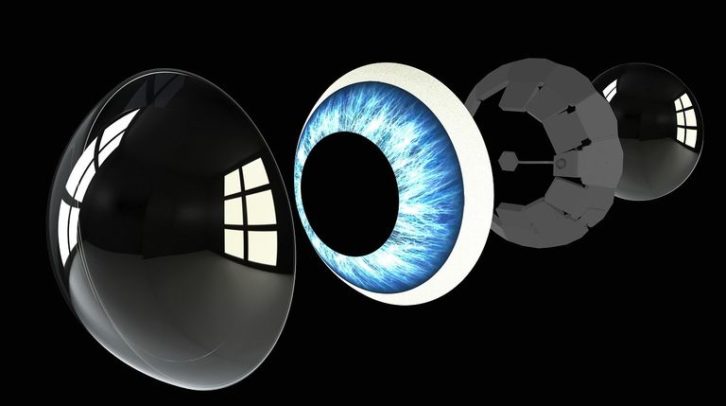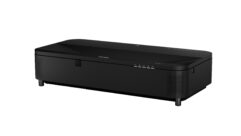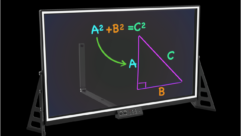
It’s called Mojo Lens, a smart contact lens coming from a company called Mojo Vision.
The Saratoga, California-based company has been working away for five years and has finally gone public with a plan for the world’s “first true smart contact lens.”
It’s R&D, so don’t worry about your LED display business. And even if it does happen, it’s not really after our big gorgeous, color-saturated screens. It’s instead of hunching over your phone, much like a heads-up display in your car is supposed to help you keep your eyes on the road (when you’re not hunching over your phone while driving).
It is the concept of “invisible computing”. The founders come from Apple, Google, Amazon, and Microsoft and they want you to be able to distract yourself from your in-person conversation, and from being in the moment, without getting caught looking at your phone. You can do a quick multi-tasking flick to the corner of your eye and see that Snapchat and your companion will be none the wiser. Of course it won’t prevent your mind from wandering off depending on the interruption, but it may help you get away with it.
“We want to create a technology that lets you be you, lets you look like you; doesn’t change your appearance; it doesn’t make you act weird walking down the street,” said Mike Wiemer, cofounder and chief technology officer at Mojo Vision. “It’s very discreet and frankly, substantially, most of the time it doesn’t show you anything.”
Where it could factor for us is interactivity. Long down the road. In the meantime it’s just interesting to know that a mechanism for tuning out a conversation to pivot to an unsolicited and potentially more interesting communication is not that easy to do.
All the usual display suspects are to blame: the right capture and display sensors, and power. They’ve tried everything from custom wireless radios to motion sensors that already exist for eye tracking and image stabilization.
The tech press is reporting that the “screen” for this covert attention-stealer is the size of a dot from an ink pen and is described as “smallest, densest display ever made.” But so far no one has shown the little Whoville screen with the sensors actually inside. They can mock it up with an HTC Vive Pro so the nefarious purpose can be “sold.” But they can’t actually do it.
The software is reported icon based, popping up in the corner of your eye. If you surreptitiously stare a t the icon they expand for more details. It is reportedly unfortunately quite easy to do for those of us who have honed our distraction chops to a fine art.
I don’t mean to totally rag on it. I can see how I might use it for work–I wouldn’t have to look down to see my notes in an interview. I could do it while driving! (not)
And despite the promise of letting “you be you,” you’ve still got to look at the corner of your eye–much as people do when they’re telling a lie, or communicating skepticism of what they are being told.

According to Popular Mechanics, most of the light from the device “is focused on a small portion of the retina at the back of the eye, called the fovea. This small depression is where our eyesight is sharpest so it helps to define details of the objects right in front of us. The fovea takes up just about four to five percent of the retina’s overall area, but contains most of its nerve endings. So, it makes sense that Mojo wants to shoot a display directly into this portion of the retina. The high number of photoreceptors means the lenses require less power and less light to transmit images.”
Wired magazine’s Julian Chokkattu describes talking to some of the company principles, reporting that the lens itself will sit right on the cornea. Ashley Tuan, vice president of medical devices at Mojo Vision, told him it will be just like wearing normal contacts. More importantly, he says, the Mojo Vision team claims to have calculated the lumens projection on the retina and found that everything is “way under the regulation,” in terms of safety standards. Good to know.
“It’s a new form factor, but you as the wearer of this product, you just see content,” Wiemer assured Chokkattu. “Just as you would see content if you held up a mobile phone or you put on a pair of glasses that made that content appear in the world—from the perspective of your body and your retina—it’s just light on your retina, just like light on your retina right now. The safety implications of this are something that we obviously paid a lot of attention to, but it’s a very safe product.”
Mojo Vision has been granted the Breakthrough Device Designation, from the Food and Drug Administration because it’s first line purpose is to try to do waht contact lenses normally do: make visually impaired people see better. This designation allows companies to fast-track development, assessment, and review for products that could help people with life-threatening or debilitating conditions. According to Wired, it actually worked best for this purpose in the demo, working a bit like night vision as described in the story.
Now that would be exciting.
Mojo Vision is partnering with the Vista Center for the Blind and Visually Impaired in Palo Alto, California, to connect with the nonprofit’s clients and get input for the lenses during development.
So long before it will replace or augment our displays, it may help more people see them, along with all the other more important things in their lives.
For a bit more info on the techy side, here’s IEEE Spectrum talking about it.
Here’s Mojo Vision’s press room so you can see what everyone else is saying.










